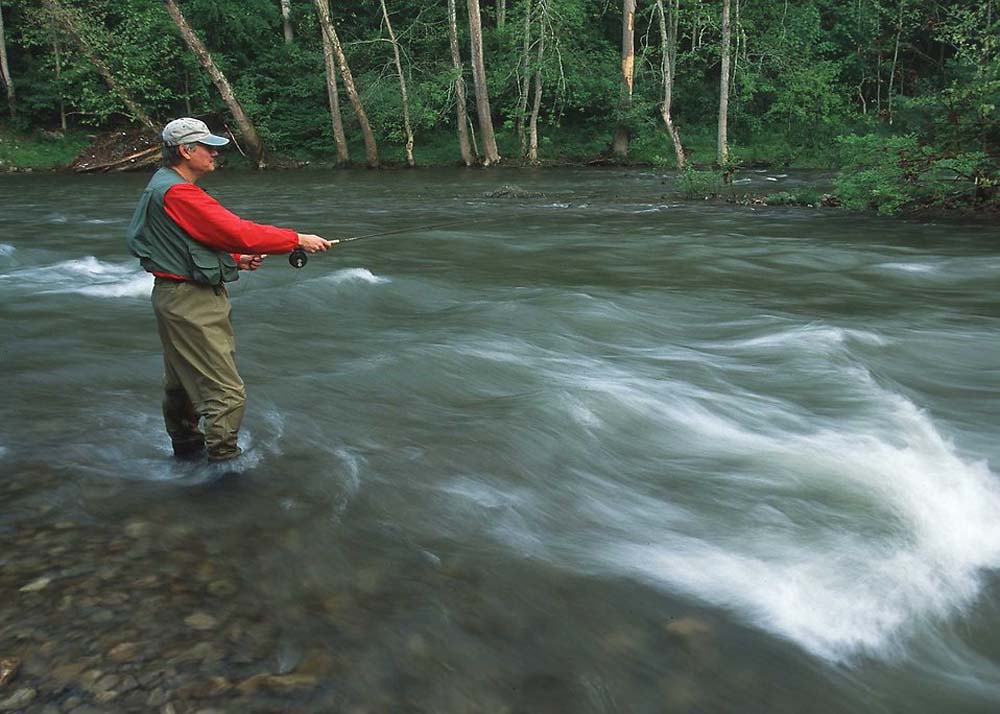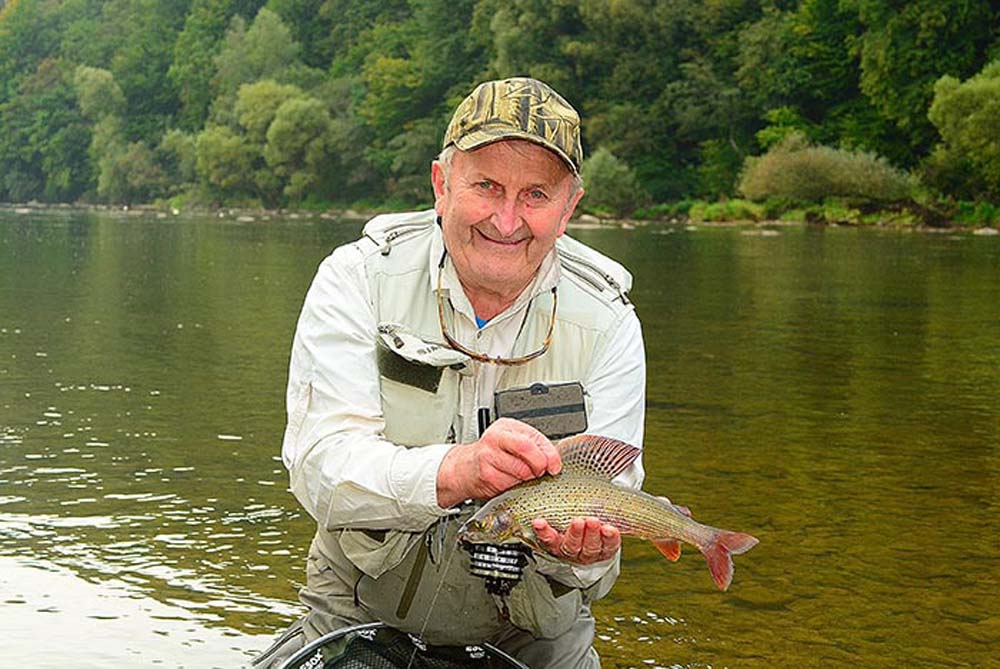
Fly fisher nymphing the South Fork of the Holston River in Tennessee. The image is public domain.
How did Euro nymphing get here? Who was responsible for it?
By Skip Clement
It’s pretty simple. A weighted fly or flies, cast upstream, fished along the bottom with the rod parallel to the surface – pulling the fly faster than the current and repeat. Tenkara fly fishing adherents so close to that nymphing technique that I fear they may have discovered it, serendipitously, ages ago?
In the 1970s, a guide from the Rainbow King Lodge mentored me and my friend, Jim Brooke, on the merits of the Salmon Egg Fly bounced along the bottom with split shot serving as the bottom management system.
WOW,” was the first thing I heard from Jim, who had already picked off two bows in the 4- and 6-pound range while I was busily un-snagging. Later I recovered to chime in with my wow that included a Dolly in the following days.

Apparently, there are other types of nymphing that predate Tenkara, and Wladyslaw Trzebunia’s 1989 contribution. Envato image.
Back to today’s nymphing known as Euro nymphing or Czech nymphing – both unsuitably applied names, and how we all got to benefit from it
In 1989, Kuusamo, Finland, at the World Fly Fishing Championship. A gaggle of journalists and bystanders were following and watching in wonder and curiosity: Who was this guy dressed in an unconventional vest, wearing garden boots for waders, and casting a patched up fly rod?
He was tenacious and very competitive, with a broad, quick smile — friendly to a fault. The mystery angler was Wladyslaw Trzebunia, then a member of the Polish national Fly Fishing Team. “Vladi,” as he is known to his friends, is the man who knocked the fly-fishing world on its butt.
In the mid-1930s, Vladi’s father had discovered that when he pulled his baited hook downstream faster than the current, he caught more fish.
— Richard R. Twarog

Illustration by Thom Glace – rainbow trout, brown trout, and brook trout. Used with permission.
Here’s the takeaway: Motion attracted the fish
Back to the 1989 tournament: Using the same primary method his father had taught him as a youngster (with refinements, to be sure), Vladi landed a staggering total of 60 fish. That number was more than all of the 2nd, 3rd and 4th teams combined! Wladyslaw Trzebunia won the individual title–and a dazzling gold medal—and the Polish team took the team title.
Since 1989 the nymphing that Vladi pioneered has been imitated, appropriated, and re-named throughout Europe and the rest of the fly fishing world. Over time, Vladi’s method has been reborn to new fathers of new nationalities.

Weighted flies get to the bottom quicker, and Vladi’s famous Vladi Worm (bottom) is a good anchor fly.
Photos by Richard R. Twarog.
Learn European nymphing techniques in a nanosecond. Team USA learns nymphing (see video), a is short distance fly fishing technique, Czech nymphing is also short-distance fishing but with two or three nymph flies of various weights, and then there is Kelley Galloup’s two fly nymph rig. There are endless versions of “European nymphing.” All are tweaks and Much Ado About Catching More Fish.
Trout feed 70% of the time on the bottom

Wladyslaw Trzebunia – Photo credit Richard R. Twarog.
Here are some essential points about Wladyslaw Trzebunia’s Polish nymphing:
• The Polish method works best in fast water, perhaps no deeper than the middle of your thighs, about three feet. For example, the tail-outs of pools or just downstream from riffles are great feeding locations for this method, even if the water is a little off-color.
• Use at least a 9-foot, 4- or 5-weight rod – Orvis Recon 10-foot 4-weight, for example.
• Typically, your leader should be a little more than 2/3 the length of the rod. So, for a 9-foot rod, a 7-foot leader would be about right. I use an 8-foot tippet as a leader on my 10-foot rod. If you want to change from using a floating line to fish dry flies, keep the same line and change your tapered leader to a straight tippet that will sink much faster and you’re all set. Remember, you’re not casting the nymph(s); you’re just lobbing them upstream.
• There are no indicators, sighters, yarn, or colored lines to use. This nymphing method is an active, not passive, way to enjoy fishing. You’re triggering a strike, not standing there waiting and watching a bobber float by. You can use either a single weighted fly or a multi-fly rig. With a multi-fly rig, one of the flies (the anchor-fly) must be heavy enough to quickly bring the flies to the river’s bottom. Remember, the flies are not in tandem.

Kelley Galloup’s two fly nymph rig. There are endless versions of “European nymphing.” All are tweaks and Much Ado About Catching More Fish. Galloup sketch – SlideInn.
NOTE: Richard R. Twarog is the author of The San Juan River: A Fly Angler’s Journal. Vladi is a licensed guide in Poland and Slovakia and continues to give seminars and teach international competitive teams and individuals.

